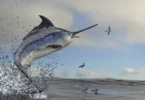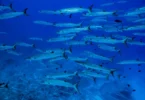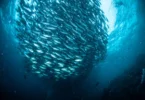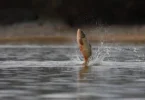Perch fish are a popular catch among anglers and a delightful dish on the dinner table. With their distinctive appearance and delicious taste, perch have carved out a special place in the world of freshwater fishing. In this comprehensive guide, we’ll explore everything you need to know about perch fish, from their habitat and habits to the best techniques for catching them and mouth-watering recipes to savor their flavor.
Introduction to Perch Fish
Perch belong to the Percidae family and are found in freshwater bodies across North America and Europe. They are known for their vibrant colors, with yellow and green hues adorning their bodies, making them a visually striking species.

Types of Perch Fish
Yellow Perch
Yellow perch, also known as lake perch, are one of the most common species of perch found in North America. They are prized for their mild, sweet flesh and are a favorite among recreational anglers.
Walleye
Walleye, often referred to as “pickerel,” are another popular member of the perch family. Known for their elusive nature and excellent taste, walleye are highly sought after by both amateur and professional anglers.
White Perch
White perch, although not true perch, are often classified as such due to their similar appearance and behavior. They are found in abundance along the Atlantic coast of North America and are valued for their firm, white flesh.

Habitat and Distribution
Perch are typically found in freshwater lakes, rivers, and reservoirs with moderate vegetation and clear water. They prefer shallow areas with sandy or rocky bottoms, where they can feed on small fish, insects, and crustaceans.
Physical Characteristics
Perch have a streamlined body with distinct vertical stripes running along their sides. They possess sharp dorsal fins and spiny protrusions, which serve as defense mechanisms against predators. The average size of perch ranges from 6 to 12 inches, although larger specimens can exceed 15 inches in length.
Diet and Feeding Habits
Perch are carnivorous predators that primarily feed on small fish, insect larvae, and aquatic invertebrates. They are opportunistic feeders, often hunting in schools to corner their prey and maximize their catch.
Reproduction Cycle
Perch typically spawn during the spring months when water temperatures rise above 50°F. Female perch release their eggs in shallow, protected areas, where they adhere to submerged vegetation or rocky substrates. Male perch fertilize the eggs externally, and the newly hatched fry seek refuge in nursery areas until they are large enough to venture into open waters.

Fishing Techniques for Perch
Anglers employ a variety of techniques to catch perch, including jigging, trolling, and bait fishing. Light tackle and small lures or bait are commonly used to entice perch, as they have a preference for smaller prey.
Culinary Uses and Recipes
Perch have a mild, sweet flavor and a firm texture, making them versatile in the kitchen. They can be fried, baked, grilled, or poached, and pair well with a variety of seasonings and sauces. Try pan-searing perch fillets with lemon butter or incorporating them into a hearty fish chowder for a delicious meal.
Benefits of Eating Perch
Perch are not only delicious but also nutritious, providing a good source of protein, omega-3 fatty acids, and essential vitamins and minerals. Incorporating perch into your diet can promote heart health, improve brain function, and support overall well-being.
Conservation Efforts
Due to their popularity among anglers, perch populations are closely monitored and managed to ensure sustainable harvests. Conservation measures such as size and bag limits help protect breeding stocks and maintain healthy fish populations for future generations to enjoy.

Popular Perch Fishing Spots
Some of the best perch fishing spots include Lake Erie, Lake Michigan, and the Great Lakes region in North America, as well as various rivers and reservoirs throughout Europe. These waters offer abundant perch populations and scenic surroundings for anglers to enjoy.
Tips for Anglers
- Patience Pays Off: Perch can be selective feeders, so be prepared to experiment with different baits and presentations until you find what works.
- Stay Mobile: If you’re not getting bites in one spot, don’t be afraid to move around until you locate active fish.
- Pay Attention to Depth: Perch often inhabit specific depth ranges depending on the time of year and water temperature, so adjust your tactics accordingly.
Perch Fishing Gear
When targeting perch, it’s essential to use light to medium-light spinning or baitcasting tackle with lines in the 4 to 8-pound test range. Small jigs, spinners, and live bait such as minnows or worms are effective choices for enticing perch to bite.
Common Challenges in Perch Fishing
Anglers may encounter challenges such as inclement weather, changing water conditions, and finicky fish behavior when targeting perch. However, with perseverance and adaptability, anglers can overcome these obstacles and enjoy a successful day on the water.
Conclusion
In conclusion, perch fish offer both recreational enjoyment for anglers and culinary delight for food enthusiasts. With their striking appearance, delicious taste, and widespread distribution, perch are a beloved species in the world of freshwater fishing. Whether you’re casting a line from shore or preparing a gourmet meal at home, perch are sure to satisfy your appetite for adventure and flavor.
FAQs (Frequently Asked Questions)
- Are perch fish good to eat?
- Yes, perch fish are prized for their mild, sweet flavor and firm texture, making them excellent for culinary purposes.
- What is the best bait for catching perch?
- Small jigs, spinners, and live bait such as minnows or worms are effective choices for enticing perch to bite.
- Where can I find perch fish?
- Perch fish are commonly found in freshwater lakes, rivers, and reservoirs across North America and Europe.
- What is the average size of perch fish?
- The average size of perch ranges from 6 to 12 inches, although larger specimens can exceed 15 inches in length.
- Are there any regulations for catching perch?
- Yes, there may be size and bag limits imposed by local authorities to ensure sustainable perch populations.








Leave a Comment